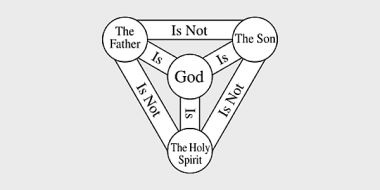Trinity Sunday: Why we celebrate the dance of Father, Son and Holy Spirit
It may sound odd at first, but some of the best and most important things in life are difficult to explain. The joy you feel at a beautiful sunset can be partly reduced to the effect of the light on your brain via your eyes, but there's more to it than that. How can you possibly explain the love you have for a family member or the loss you feel at the death of a loved one? You can try, but you'll never capture the whole experience. Try to describe why your favourite food or song or fragrance is so wonderful and you'll only ever get part of the way with words.

So it is with one of the most important concepts in Christianity. You won't find the word written in the Bible, but the Trinity is one of the most profound and important Christian doctrines. Yet even describing the Trinity as a doctrine seems like an attempt to pin it down as something cerebral, something to be studied and codified and explained. Of course that's valid and important, but primarily the Trinity is to be experienced, to be surrendered to and to be loved. As we approach Trinity Sunday, how can we think about it and experience it?
We get our first hint of the Trinity at the very beginning of chapter one of Genesis. As Rob Bell explains, "In verse one God is creator, in verse two God is some sort of spirit and in verse three God is some sort of word."
From this outset, throughout Scripture we are introduced to the three persons of the Trinity. As Greg Boyd puts it, "Father, Son, and Holy Spirit are each fully God. For this reason the church has always affirmed the doctrine of the Trinity, which teaches that God has one substance (ousia) but eternally and fully exists as three distinct Persons (hypostases in Greek, personae in Latin).
In a way it's a relatively simple concept. One God, three persons. Yet it is impossible to fully understand. Instead, we are called to enter into the life of the Trinity and then we will experience it. One of the historic ways in which the Church has done this is through the famous Rublev icon of the Trinity. The three persons of the Trinity are seated at a a table. Because of the angle at which the viewer is seeing the scene, she is invited to join the Trinity at the table.

Henri Nouwen describes how we can find ourselves drawn into the life of the Trinity, "As we place ourselves in front of the icon in prayer, we come to experience a gentle invitation to participate in the intimate conversation that is taking place... The movement from the Father toward the Son and the movement of both Son and Spirit toward the Father become a movement in which the one who prays is lifted up and held secure..."
It is a profound indication of the invitation we have from God. Not simply to be called and justified, as Paul puts it in Romans 8, but to be glorified. Orthodox Christians have a much more well developed sense of what this actually means than we do in the Western Church.
Orthodox theologian David Bentley Hart seems to instinctively understand the need to describe the Trinity not in plodding prose but in the language of art. In The Beauty of the Infinite he says, "As God is Trinity, in whom all difference is possessed as perfect peace and unity, the divine life might be described as infinite music, and creation too might be described as a music whose intervals, transitions, and phrases are embraced within God's eternal, triune polyphony."
The image of polyphony is important. Polyphony describes music that has several different parts interweaving together to create the whole. It is one piece of music, but it is comprised of several equally important parts interacting with each other.
Think of Thomas Tallis' stunning Spem In Alium. This most divine piece of music evokes God not only because of its sheer beauty, but because of the interplay, the dance, of the various parts.
Dance is another incomplete but appropriate metaphor to attempt to describe the Trinity. Some Church Fathers spoke about Perichresis – the dance of the Trinity. CS Lewis used this imagery to describe God. In Mere Christianity, he says, "In Christianity God is not a static thing... but a dynamic, pulsating activity, a life, almost a kind of drama. Almost, if you will not think me irreverent, a kind of dance."
Tim Keller picks up on this theme in his book The Reason For God. He says, "The Father, the Son, and the Spirit are pouring love and joy and adoration into the other, each one serving the other. They are infinitely seeking one another's glory, and so God is infinitely happy. And if it's true that this world has been created by this triune God, then ultimate reality is a dance."
To think of the Trinity as the ultimate reality might well be close to blowing our minds, but in a way, that is the point. The creator God whose creativity overspilled into the creation of the entire universe. The ground of all being who invites us to join the dance. It's quite something when you think about it. It's even better to experience it.











